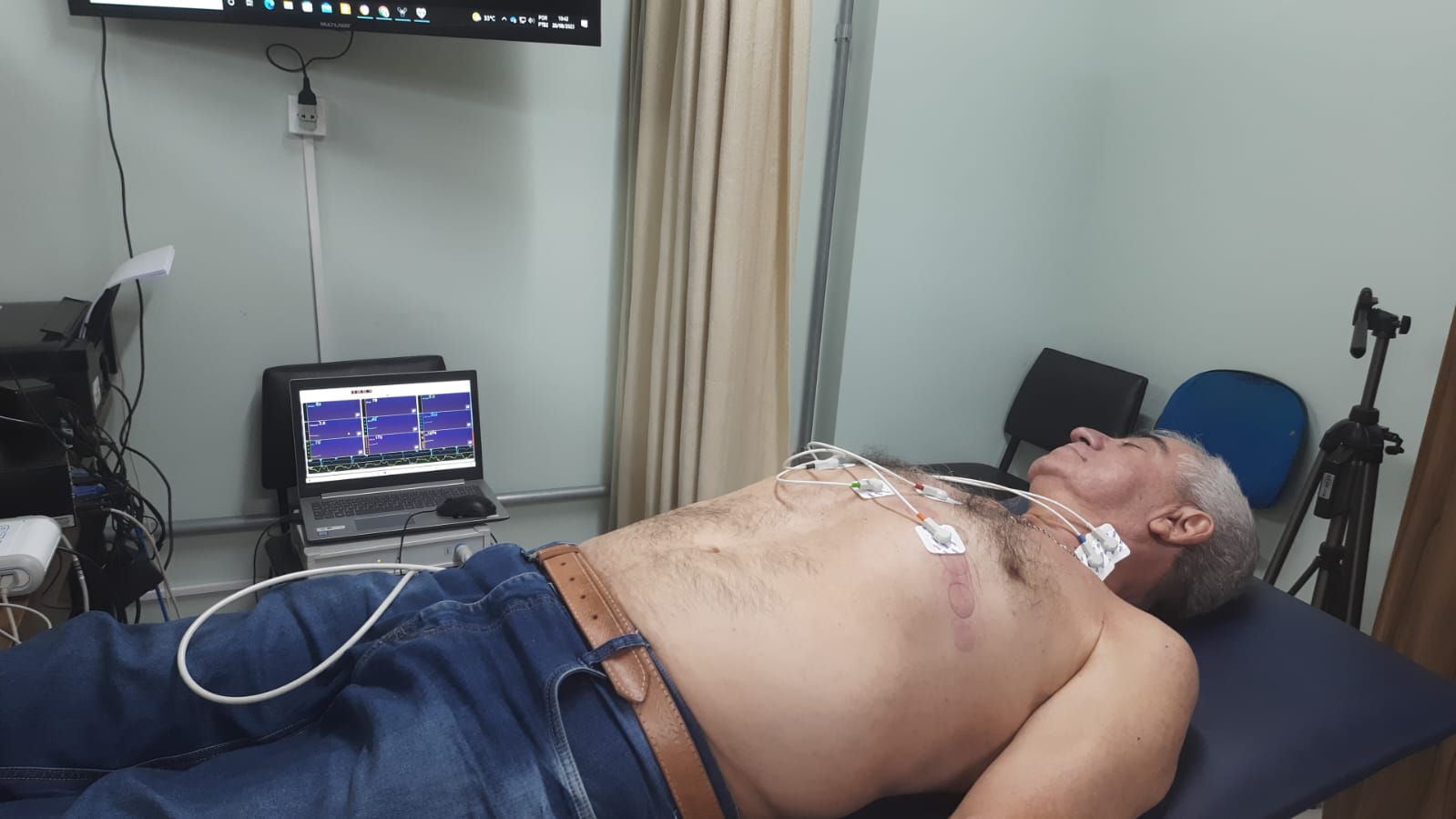

The researchers assessed lung mechanics by impulse oscillometry, a technique that uses sound waves to measure resistance to the normal movement of air in and out of the lungs when breathing at rest (photo: Meiry de Souza Maia)
The study was conducted at the Federal University of São Paulo and involved 731 over-sixties. It is the first to demonstrate the effects of high blood pressure on lung mechanics. The findings highlight the benefits of regular physical exercise for partial protection of the lungs.
The study was conducted at the Federal University of São Paulo and involved 731 over-sixties. It is the first to demonstrate the effects of high blood pressure on lung mechanics. The findings highlight the benefits of regular physical exercise for partial protection of the lungs.

The researchers assessed lung mechanics by impulse oscillometry, a technique that uses sound waves to measure resistance to the normal movement of air in and out of the lungs when breathing at rest (photo: Meiry de Souza Maia)
By Maria Fernanda Ziegler | Agência FAPESP – High blood pressure (hypertension) causes thickening of the blood vessels and hardening of the arteries (arteriosclerosis). A study conducted by Brazilian researchers has shown for the first time that a similar phenomenon occurs in the lungs. High blood pressure hardens the bronchi and increases airway resistance, impairing respiratory capacity.
The study sample comprised 731 men and women over 60, both with and without high blood pressure. It was designed to investigate the effects of hypertension on lung mechanics, detecting where and how high blood pressure impaired lung function. An article reporting the findings is published in the journal Advances in Respiratory Medicine. The study was supported by FAPESP.
“Our analysis showed that subjects who practiced regular physical activities appeared to be partially protected against hardening of the bronchi,” Rodolfo de Paula Vieira, last author of the article, told Agência FAPESP. Vieira heads the Pulmonary Immunology and Exercise Laboratory at the Federal University of São Paulo’s Institute of Science and Technology (ICT-UNIFESP) in São José dos Campos, São Paulo state, Brazil.
The researchers conducted spirometry tests to gauge respiratory function, and assessed lung mechanics by impulse oscillometry, a technique that uses sound waves to measure resistance to the normal movement of air in and out of the lungs when breathing at rest.
General muscle strength was measured using a hand grip dynamometer, and respiratory muscle strength was evaluated using a manovacuometer to gauge maximal inspiratory and expiratory pressure. The participants answered questionnaires on the intensity and frequency of physical activity, as well as items associated with the quality of life.
According to Vieira, the findings highlight the need to assess respiratory function in patients with high blood pressure, which affects around 1 billion people worldwide. “Hypertension has long been known to impair lung function, but until now the mechanism involved wasn’t clearly understood. Our findings show that physicians should refer patients diagnosed with high blood pressure to a specialist for tests to assess lung function and mechanics, especially older patients. They should also be given guidance on the importance of an active lifestyle to avoid loss of lung function due to high blood pressure,” Vieira said.
Prior research showed that lung function is closely linked to the ability of the lungs to expand and revert to their previous state (elastance and resistance), and that this was most altered in older patients with hypertension.
“Changes in lung mechanics are expected as a natural result of the aging process, but basically the study shows that hypertension accelerates the hardening of the bronchi and that physical exercise keeps this process partially at bay,” Vieira said.
“This is very important as the more hardened the bronchi become, the more difficult it becomes for air to enter and leave the lungs. In the long run, this accelerated process of hardening of the bronchi makes breathing difficult for older people. Worse still, it’s a cycle: lower oxygen saturation accelerates the aging process throughout the organism.”
The consequences do not stop there. “Acceleration of aging increases the risk of cancer, non-transmissible chronic diseases such as diabetes, heart attack, and thrombosis. This highlights the importance of including care of the lungs in the treatment of hypertension,” he said.
Exercise for heart and lungs
In another study that has not yet been published, the same researchers analyzed the relationship between physical exercise and protection against hardening of the arteries and bronchi due to hypertension in a different group of 150 older volunteers, focusing on the extent to which the degree of rigidity could affect blood flow and lead to aneurysms or thrombosis (hemodynamics). The volunteers were submitted to a three-month training protocol comprising three exercise sessions per week.
“Physical exercise all but eliminated these cardiovascular alterations. This proves once again that physical activity must be part of the lives of older people. There’s no such thing as healthy aging with sedentarism,” Vieira said.
The article “Physically active lifestyle attenuates impairments on lung function and mechanics in hypertensive older adults” is at: www.mdpi.com/2543-6031/92/4/27.
Republish
The Agency FAPESP licenses news via Creative Commons (CC-BY-NC-ND) so that they can be republished free of charge and in a simple way by other digital or printed vehicles. Agência FAPESP must be credited as the source of the content being republished and the name of the reporter (if any) must be attributed. Using the HMTL button below allows compliance with these rules, detailed in Digital Republishing Policy FAPESP.





